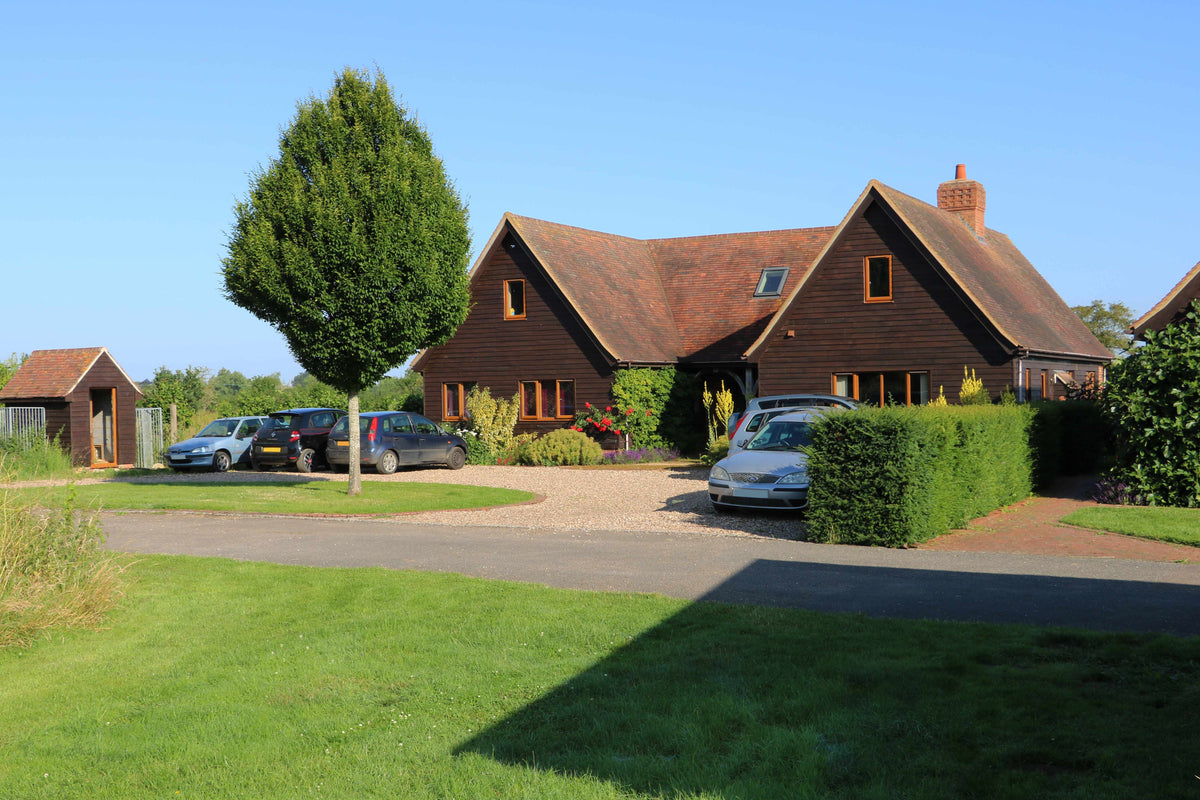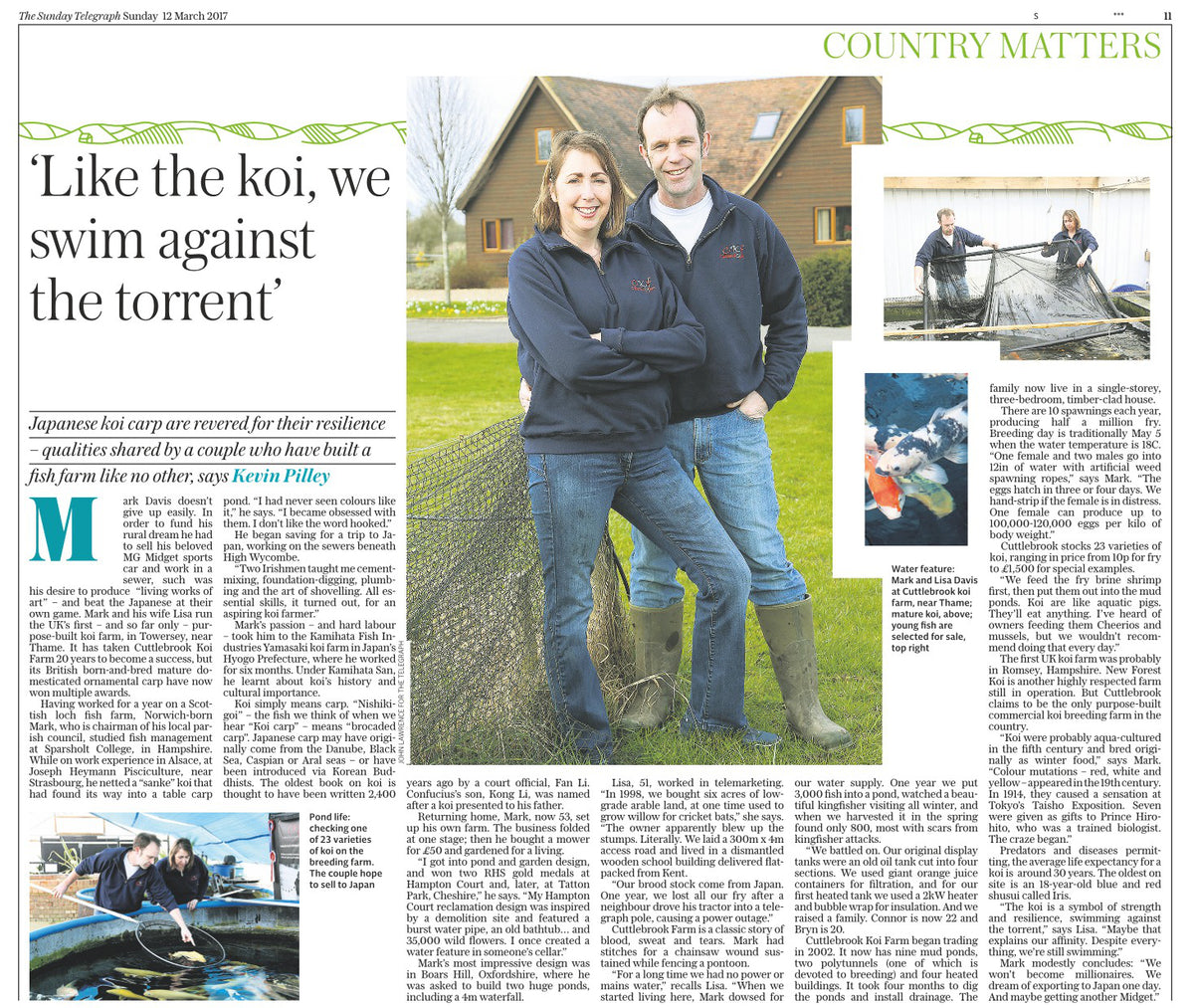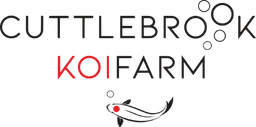About The Farm
OUR STORY
At Cuttlebrook Koi Farm we breed beautiful Koi – Nishikigoi to be exact
We have been breeding and growing Koi at our farm since we first built it in 1990 and over the years have developed a reputation for producing the finest quality Nishikigoi. We know of no other purpose built, commercially successful, Koi farm in the UK today. We began trading as Cuttlebrook Koi Farm in 2001 and over the years, Koi bred by us have won hundreds of awards at Koi shows around the country, competing against Japanese imported Koi. If you would like to visit us please see our "Visit Us" page for details.
My name is Lisa Davis, I am Director, administrator, secretary, farm hand and mother to our two sons. My husband (Mark Davis) and I run Cuttlebrook Koi Farm right here in Oxfordshire, UK. When I met Mark in 1988 I didn’t know anything about koi but at the time he was writing three of the chapters for the Interpet Encyclopedia of Koi (history, breeding and feeding), a good way to impress a girl!


Let's start at the beginining
Sparsholt College
I found out that Mark had been to Sparsholt College from 1983 to 1985 and studied fish farming – of course in those days you had to work for a year on a fish farm before they would even let you on the course.
He has some great stories about his year spent living in a soggy caravan at the side of a loch in Scotland! At Sparsholt he studied water chemistry, geology, fish farm construction techniques, fish health and disease diagnosis amongst other things.
During his time at Sparsholt he worked on several fish farms in the UK and also on carp farms in France and Hungary. He had some amazing experiences during that time. It was here that he encountered his first koi amongst a lake full of table carp in France and it was then that he decided that he wanted to learn more about them.
Mark has always been a very creative person. A Koi breeder creates living works of art so breeding Koi combined his two passions, art and fish! When he graduated from Sparsholt in 1985 Mark managed to secure a letter of introduction to Mr Kamihata (Kamihata Fish Industries) who agreed to let him spend six months working on his koi farm in Yamazaki.
Japan
Where Mark's Journey Began
Mark sold his MG Midget, which was his pride and joy, and set off to Japan where he lived and worked, with the rest of the farm hands, on the farm. Very few people spoke any English which meant Mark had to learn some Japanese! His bed was a futon, with no pillow, in the fish food store room, and dinner was a bowl of rice with a raw egg cracked over it. He had no preconceptions about koi, never having kept them as a hobby, but his education at Yamazaki was all encompassing.

Much of his time was spent on the most unpleasant jobs on the farm usually involving pond management. It may have been mind numbing, back breaking work but the result of this is that he really knows how to keep a good mud pond! Mark was allowed to take part in every aspect of running a koi farm. He sat for weeks with the farm manager, Tanaka, carrying out selection, constantly asking questions and checking that his selection technique was correct. Mark learned koi appreciation from an expert farm manager, Nushimura, and also from Mr Kamihata himself . He asked lots of questions and made copious notes. He even worked in the auction house too. Mark learned koi farming Japanese style from the bottom up and the techniques he learned are as relevant today as they were then.


BACK IN THE UK
Starting Our Own Farm
When Mark came back from Japan he got a job at BritKoi working for Eric Devis and then from there went to work for the Kent Koi Company. Mark ran their koi farm but also got involved in pond construction and was involved in some very large projects. It was here that he learned all the basic techniques of building a good koi pond and the skills involved from pipework to filtration and fibreglassing. It was also during this time that Mark did the benching at the BKKS National Show three years running. Mark and I first met during this period - it was 1988 and I was working in IT sales at the time.
About a year later, Mark decided that it was time he started his own koi farm and with a backer he set about looking for a suitable site. He looked all over the south of England and on his way back from looking at a site in Hertfordshire, he got lost and ended up heading into Thame in Oxfordshire. It was March and as he approached the town he could see the flooded water meadows - it looked an ideal area for a fish farm. He drove into Thame town centre, parked in the car park and the first building he came to happened to be the local land agent. He went in and told them what he was looking for and the agent said that just that morning a piece of land just like he had described had come onto the market in a village called Towersey, just outside of Thame. Mark went to look at it and it was perfect!
To cut a long story short, Mark set up the farm in 1990 only to discover that the money his backer had planned to buy the farm with had disappeared in the recession that had just hit and wasn't available after all, so the bank had provided the finance - this meant that we had to start selling any fish that he bred as soon as they were big enough and we couldn’t keep any to grow on, we were throwing out the baby with the bath water so to speak! We knew we could never make the business work on this basis and after a couple of years made the painful decision to fold the business.
Mark now found himself out of a job and so started pushing a lawnmower and doing garden maintenance. We still had access to the ponds, as his ex partner still owned the farm and wasn’t in a hurry to sell, so Mark still did some work on it in his spare time, breeding a few koi each year. The garden maintenance turned into garden design and construction, as well as koi pond construction, which in short, resulted in Mark becoming one of the country’s top garden designers, winning several RHS Gold awards for garden design and construction including the top award for water garden design, the Tudor Rose, at Hampton Court Palace Flower Show in 2000. It was during this period that we started our family with our eldest son being born in 1994 and our second son in 1996.
NEW BEGINNINGS
We couldn't afford to buy all the farm
In 1998 Mark’s ex partner decided he wanted to sell the farm. We couldn’t afford to buy the whole 15 acre site and so bought the 6 acres that contained the main ponds. Now that we owned the site ourselves we decided that we would try and make it a business again. There was no accommodation on-site and, although we lived in the village by now, we realised, from experience, that there was no way we could successfully run the farm unless we lived there, so we applied for planning permission to live on site. We now had a six acre field with ponds on it and nothing else, we had no mains electricity, no mains water and no sewage. We had to first build ourselves a 150 metre driveway which had to be 1 metre thick to cope with the water logged nature of the land. Next we had to get mains electricity laid on which cost thousands of pounds, once we had done this we could then construct our living accommodation!
We also had to dig a well. Fortunately Mark had perfected the art of dowsing for water with metal rods and was able to find a suitable spot to dig a well for our household use. Now we had water we had to install a sewage treatment plant for the house. Finally, and only once we had done all this, we were able to move in which we did on the 11th December 2000, our youngest son was not quite four years old at the time. We now had to develop our farm. We were no longer able to use the original fish house so we had to construct new holding facilities, for koi fresh from the mud ponds, and also breeding facilities.

In order that Mark could concentrate on the farm full time, I set up my own company doing business to business telemarketing for IT companies, working from our office at home, this supported us for the next couple of years. We started trading as Cuttlebrook Koi Farm in March 2001 and have had to make do with the facilities that we had, each year adding to and improving them. With no investor and a determination not to borrow money from the bank to finance the development of the business, the farm has had to pay for itself right from the start. In 2002 it was making enough money for me to stop running my telemarketing business and to concentrate full time on the farm. Early in 2005 we finally completed our spawning facilities and for the first time we were able to breed enough koi in one hit to fill all the nursery ponds in one go.
The koi we breed from originate from well known Japanese breeders including Isa, Marudo, Omosako, Matsue, Momotaro and a number of other notable breeders. All are chosen on the basis of their suitability as a parent fish and qualities such as body shape, skin quality etc are uppermost in their selection. We have steadily increased the production of our nursery ponds from harvests of just 5-20,000 fry at 1 inch over the years to now where we harvest between 20 - 50,000 fry per pond. The more koi you have to select through at 1 inch, the greater the chance of finding the high grade fish that would otherwise not have survived. We are now keeping less per harvest which means the quality of our koi rises even further.

Each year the quality of the Koi we produce increases and our customers buy from us because they know that the fish they get are healthy, and as good in quality as many of the fish currently being shipped from Japan. It is our aim to continue to improve the quality of our fish every year and Koi bought from us have already won many prizes in shows around the country competing against Japanese bred koi. The judges of the British Koi Keepers Society are renowned world wide for their high standards and we are honoured that time and again they have judged our fish worthy of many notable awards.
Our aim has always been to breed Koi of the highest quality but our emphasis has to be on the health and welfare of our fish first and foremost. We don't buy fish in to grow on and sell and we don't send our fish off site to be grown on elsewhere, neither do we mix the fish that we sell with Koi from any other source. We have a bio-security plan approved by CEFAS who inspect our farm twice a year for signs of infectious diseases such as KHV and SVC.
All of the Koi that we breed and sell start life in our breeding polytunnel, where they hatch, and then they are moved out into our mud ponds for their first summer. It used to be that we kept Koi of all sizes either in a mud pond or in a sales tank, but in 2004 that all began to change. In 2004 we built our first insulated, heated building (or “hot house”) to find out how successful it would be at growing our Tosai over the winter. It worked so well that we built a bigger one in 2005 (the Nisai House) and then an even bigger one in 2006 (the Tosai House). Our original hot house is now a quarantine building where all new parent fish are kept when they first arrive on the farm and before they are introduced to our existing breeding stock.
The Tosai House is where around 2000 of our small Koi that we want to grow on are taken at the end of their first summer. They spend the winter there growing at summer temperatures. We select through them during this time to make sure that only the best are kept as they grow. The Nisai house is where Koi that are at the end of their second summer are kept, if we want to keep them growing on for another winter. Most of the fish from both of our hot houses are put up for sale the following season, during Spring and Summer, and a small percentage are kept to grow on for another season.
THE FARM NOW
In 2008 we replaced our "shed" home with our permanent home
We now have a further insulated building where we grow on the very few Koi that we keep beyond the age of two years. This is called the “Blue Room” because when we first built it, it was mostly blue in colour but even though it has changed a lot since then, and is no longer blue, the name has stuck. The main tank in this building is just under 40,000L, and we have taken a number of fish to over 80cm in this tank. It also works well as a 'show room', to exhibit the size and potential our Koi have, something we weren't previously able to do.
While I’ve mentioned how our infrastructure has grown, our team has also grown over the last few years – the longest standing member being Sam Norley, now our General Manager. As with everything that happens on the farm, there’s a story behind how he came to work with us.
Sam first contacted us in February 2014. He was studying for an Aquaculture degree at Sparsholt and had arranged a work experience placement at a fishery, which got flooded out a week before he was due to start. He had to quickly find an alternative placement and when he searched for fish farms online, he discovered that we weren’t that far away from where he lived. He contacted us to see if we would be able to fill the gap for him and, while we didn’t normally take students at that time of year, we knew it would be difficult for him to find somewhere at such short notice, so we agreed that he could spend the next three weeks with us. He gave up his holiday job working at an aquatic retailer and began working for us instead. When he graduated from Sparsholt, he joined us full time.
The photo shows Mark and Sam harvesting a pond of Shiro Utsuri in 2016. As the farm progressively grew more, we decided to take on two more full time staff in 2021, you can meet the team here.




THE SUNDAY TELEGRAPH
In 2017 we were contacted by the journalist Kevin Pilley who wanted to write an article about us
The farm and COVID
The biggest change to the farm in recent years has been the effect of COVID-19
The biggest change to the farm in recent years has been the effect that COVID-19 has had on the way that Koi are bought and sold. We’ve had a website for many years and, while we were selling Koi online already, most of our sales were made to customers who visited the farm, either on a day when they were free to visit without an appointment, or on one of several event days that we used to hold each year. When COVID restrictions came into force and Koi keepers could no longer travel to view Koi in person, online sales really took off. We began doing online launch events in place of the events we used to hold on the farm – they proved so popular that our website crashed several times before we changed to a different platform! We shared our experience in a video at the time.
2021 Q&A VIDEO
After another busy season on the farm, we opened up questions for our customers to ask us
Selling our Koi through our website has been so successful that we are still kept incredibly busy fulfilling online orders. We don’t have time for event days on the farm anymore, but customers can make an appointment to visit us if they would like to choose their Koi in person and, if there is time, we are happy to show them around while they are here.
THE FUTURE OF THE FARM
